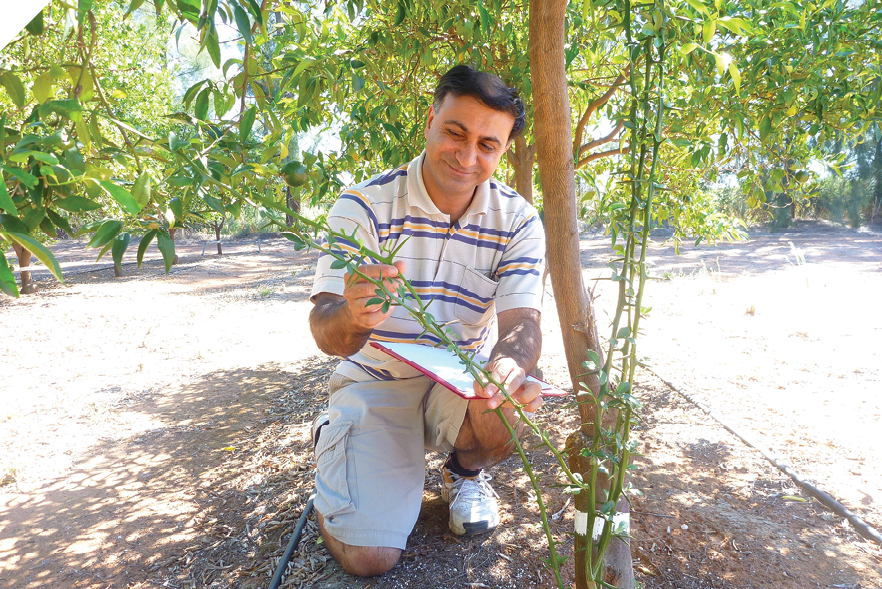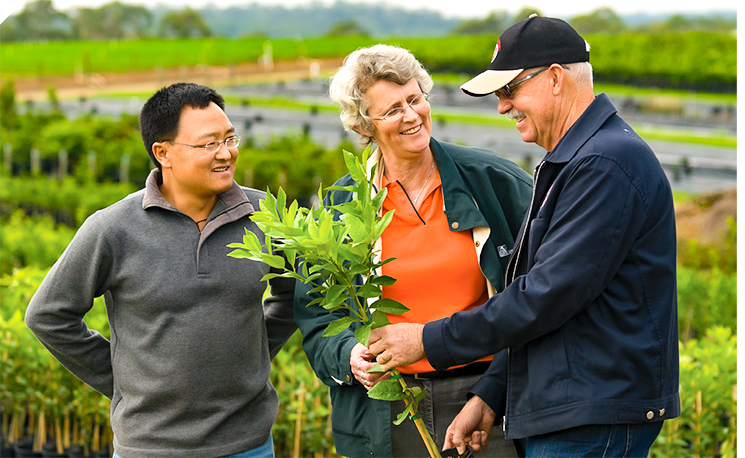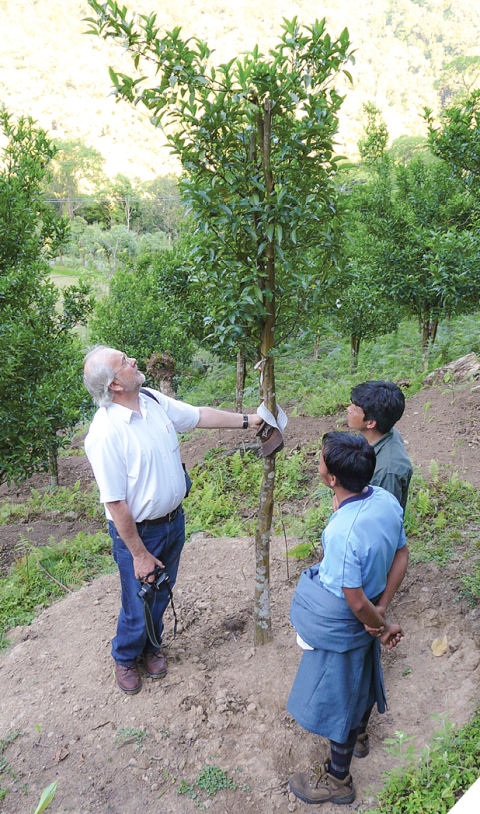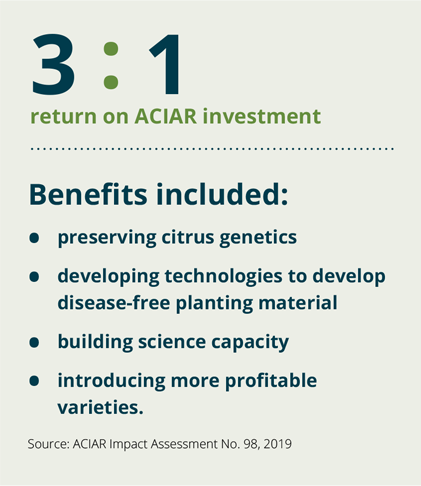One of the earliest ACIAR research partnerships was with China, a centre of origin for many types of citrus fruits. Building on established scientific and diplomatic linkages, China and Australia agreed to exchange citrus germplasm material – such as seeds, rootstock and scion varieties – for assessment and to develop new and better varieties for citrus production.
An Australian International Development Assistance Bureau (AIDAB) citrus project completed in Hunan Province, China, in the early 1980s, concluded that further investment in citrus would be beneficial to both China and Australia. Subsequently, citrus rootstock improvement was identified as a priority area for further collaborative research, following a visit to China by Mrs Patricia Barkley, New South Wales Department of Primary Industries (NSW DPI) and Dr Gabrielle Persley, ACIAR, in 1986. A feasibility study in 1988 by Dr Ken Bevington, NSW DPI, Dr Steve Sykes, CSIRO, and Mr Robert Moore, ACIAR, recommended that a citrus rootstock improvement project should proceed.
In 1992, ACIAR funded what would become a decades-long program to screen citrus germplasm for disease resistance, salinity tolerance, uniformity and graft union compatibility. The program aimed to supply growers in China and Vietnam with high-quality, disease-free and virus-free planting material that, once established and in production, would generate income for local communities. The first projects were led by Mrs Barkley and Dr Bevington of NSW DPI.
Dr Tahir Khurshid is a research physiologist with the NSW DPI. He has been involved with the ACIAR-supported citrus projects since 1999. He evaluated 56 varieties of rootstock from China and Vietnam, with six promising rootstocks commercially released in Australia in 2017, offering increased productivity for Australian growers.
‘This result would not have been possible without the support of ACIAR. Australian scientists had a good relationship with their counterparts in China. With project arrangements in place and ACIAR support, Australia gained access to Chinese rootstocks and we were able to identify new rootstock for Australian growers.’
As a result of the science partnership, China’s citrus industry added Australian citrus varieties – such as the Lane Late navel – to the mix of varieties it grows. As a later-maturing variety, Lane Late allows growers to harvest and supply the market over a longer period and is worth about A$38.4 million a year to the Chinese industry.
The Australia-Pakistan Agriculture Sector Linkages Program (ASLP) was established in 2006 to improve livelihood systems for the rural poor in Pakistan and build links between the agriculture sectors of Australia and Pakistan. Research and extension on citrus focused on improving orchard and management practices for Kinnow mandarins, as a major crop for local and export markets. The project also introduced new germplasm.
Over almost a decade, and two projects, more than 5,000 growers were trained in new practices, seven new varieties and six rootstocks of citrus were introduced to extend and expand the marketing period, and greater understanding of value chains was attained to improve fruit quality to achieve higher market prices and reduce wastage through improved harvesting and post-harvest practices.
Dr Khurshid also led one of the two projects in Pakistan for a decade, which resulted in the commercialisation of Daisy mandarin (Citrus reticulata) and Arnold Blood orange, extending the citrus production season in Pakistan. In Khyber Pakhtunkhwa province the rootstock Troyer citrange has been introduced to replace sour orange (Citrus aurantuim) rootstock.
Testing and ongoing registration of new varieties and rootstocks more than a decade after the project finished indicates the building of in-country capacity during the project phase. Additionally, Pakistani women and men were trained in nursery skills to produce high-quality citrus trees at home, boosting their incomes.





